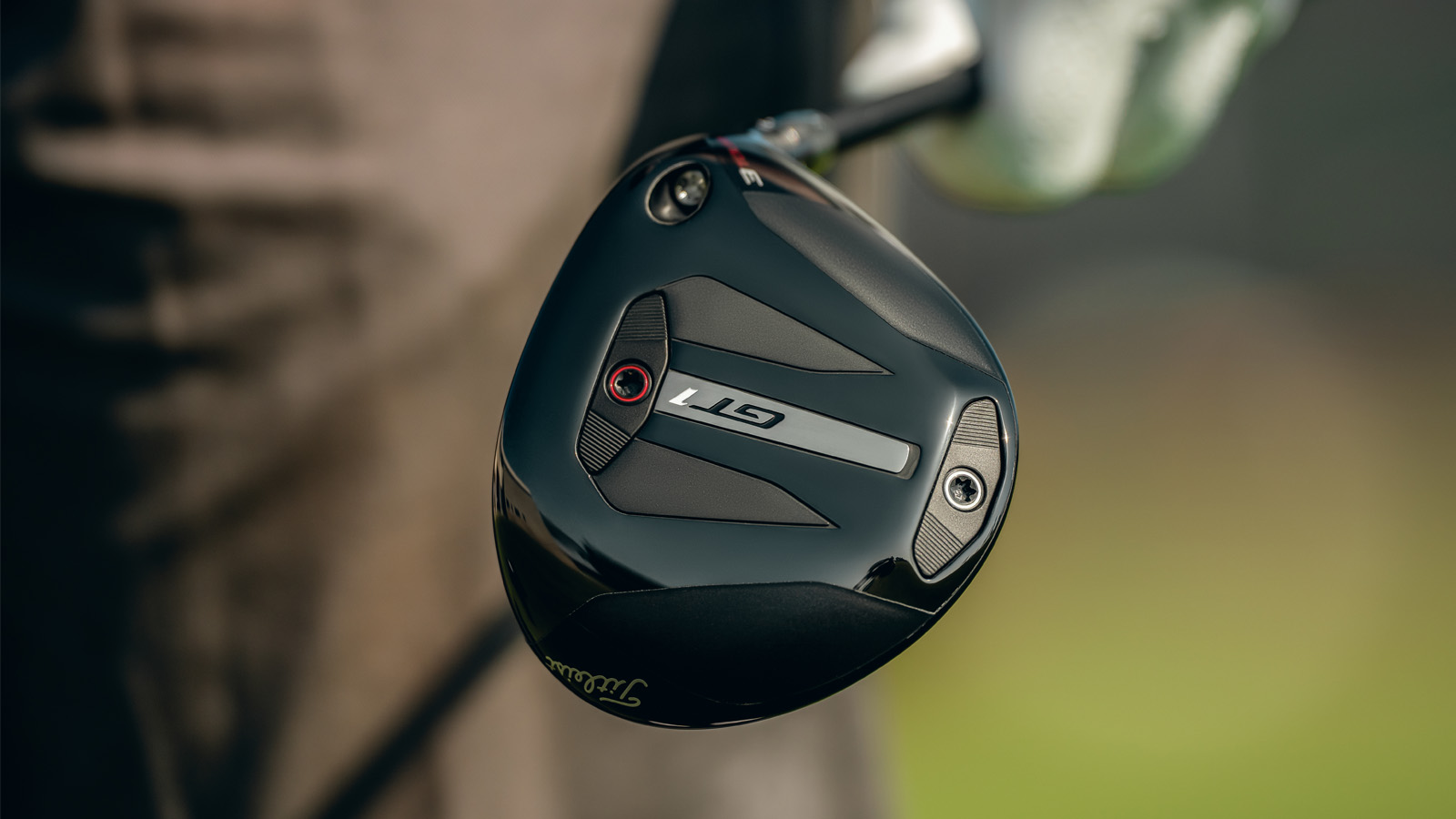How A Shaft Fitting Can Transform Your Driving
Equipment expert Joe Ferguson takes a deeper look at the importance of being fitted into the correct driver shaft…


We’ve probably all heard the expression ‘drive for show and putt for dough’, but statistically that phrase might be a touch misleading. With golf courses now longer than ever, the importance of driving the ball well in today's game cannot be overstated. There have been significant advancements in all aspects of the best driver design over the past couple of decades, but none are more influential than those made in shaft production. Higher-grade, multi-material shafts have revolutionized the technology in this area, and with more options than ever before, it is crucial to find the right one to suit your game.
Firstly, and fairly obviously, I should say that the simplest and safest way to achieve this is by going to a custom fitting with an experienced fitter. A good fitter will ask appropriate questions to establish things such as feel preference, what flight you would like to see, what your standard and desired shot shape is, and so forth to get a benchmark for what you are looking to achieve.
In my experience as a fitter, the more you have thought about these things and the more information you can provide your fitter, the better the outcome will be. But what sort of things can a fitter change in terms of the shaft to achieve the desired result?
Shaft Profile

The new 2024 Fujikura Ventus Velocore+ family
The profile of a shaft is essentially its DNA and what it is designed to do. To make this simple, we can more or less categorize these profiles into three areas, low launch/spin, mid launch/spin, and high launch/spin. That is somewhat simplifying the concept as there are some shafts that crossover the launch and spin divide somewhat and blur the lines but for the purposes of this description, these three profiles are more than adequate.

Selecting the correct profile is essential to maximise launch, spin, and overall performance
Depending on where and how much material is distributed around the golf shaft, manufacturers vary the flex of shafts in certain areas to create the desired flight outcome. For example, the low launch/spin profile shafts will generally have more material in their tip sections which stabilizes that area of the shaft and helps to reduce dynamic loft promoting lower flight and spin. Conversely, higher launch/spin shafts will generally have a softer tip section to help with dynamic loft, and as such higher launch and spin.
Some shafts can even be, what is referred to as counterbalanced. These shafts feature significantly more weight at the butt end of the club and can assist certain swing types in returning the clubface square to the ball more consistently.
Shaft Weight

A custom fitter swingweighting a club during a fitting session
The weight of the shaft is crucial in promoting good timing in the golf swing. Shafts that are too heavy will take too much effort to swing and will result in poor and inconsistent strikes. Similarly, shafts that are too light for a player will feel unstable and can have a negative effect on both strike location and dispersion.
Subscribe to the Golf Monthly newsletter to stay up to date with all the latest tour news, equipment news, reviews, head-to-heads and buyer’s guides from our team of experienced experts.
With driver shafts varying between around 40 grams and upwards of 80 grams, there is a broad spectrum of weights to choose from so this is a critical area to get right.
Shaft Length
The length of the driver shaft is often an afterthought (if a thought at all) for most consumers, yet it has a monumental impact on things such as strike location, clubhead speed and even dispersion. However, it might not be as simple as you think to get right. Conventional thinking would suggest that a taller player would need a longer shaft and vice versa right? Well, at the very top of the game, this can be proved to be incorrect.

World Number 1 Scottie Scheffler trusts the Fujikura Ventus range
Take 6ft 4” Scottie Scheffler as an example. He uses a Fujikura Ventus Black shaft at a playing length of 45 inches, whereas Tyrrell Hatton, who is optimistically 5ft 9” tall uses a driver of 45.75 inches in length.
There is no magic formula or measurement to get driver shaft length correct, it is simply a case of good old-fashioned trial and error, but if you have provided a fitter with some good information on your game and what you are looking to achieve, it will certainly help the process along.
Shaft Flex


Without wanting to be too controversial here, in my fitting experience, whilst flex is not unimportant, I would definitely sit it behind both profile and weight in the hierarchy of importance. I have seen a more dramatic influence on ball flight from those other two categories that I mentioned than shaft flex, but it is still a relevant parameter.

Fitter and player discussing data between shots
Generally speaking, the faster a player's swing speed, the stiffer the shaft should be in order to handle the load that is being put through it and vice versa, however, there must be some wiggle room in terms of a player's feel preference. Many players will not like the feel of an overly stiff shaft in driver, with some describing the feeling as ‘dead’ or ‘boardy’, whereas others will feel that signifies stability and will enjoy the confidence that brings. Whilst there are some general guidelines on a speed-to-shaft flex correlation, this can be a subjective topic that a high-quality fitter will be able to guide you through.
Tipping

Cutting from the tip end will alter the playing characteristics of the shaft
I’m not talking about the kind of tipping you might be thinking of at a bar or restaurant here, I am referring to the process of cutting a shaft from the tip end to influence its feel, flex, and profile. This is really getting into the minutia of the shaft world but it is an area that can really fine-tune a shaft to your requirements. You could go down a serious rabbit hole on that topic alone, so if you would like to learn more about tipping, you can check out an article recently published in conjunction with the Golf Monthly Kick Point Golf Gear Show podcast.

Joe has worked in the golf industry for nearly 20 years in a variety of roles. After a successful amateur career being involved in England squads at every age group, Joe completed his PGA degree qualification in 2014 as one of the top ten graduates in his training year and subsequently went on to become Head PGA Professional at Ryder Cup venue The Celtic Manor Resort. Equipment has always been a huge passion of Joe’s, and during his time at Celtic Manor, he headed up the National Fitting Centres for both Titleist and Taylormade. He’s excited to bring his knowledge of hardware to Golf Monthly in the form of equipment reviews and buying advice.
Joe lives in North Devon and still plays sporadically on the PGA West region circuit. His best round in recent years came earlier in 2023 where he managed a 9 under par 63 at Trevose GC in a Devon & Cornwall PGA Tournament.
Joe's current What's In The Bag?
Driver: Switch between TaylorMade Qi35 and Callaway Elyte TD - both with Fujikura Ventus Black 6-X
Fairway wood 1: TaylorMade BRNR Copper Mini Driver - Fujikura Ventus Black 7-X
Fairway wood 2: Callaway Apex UW 17˚- Fujikura Ventus Black 9-X
Irons: TaylorMade P7CB 3-PW with Dynamic Gold Tour Issue X100 shafts
Wedges: Callaway Opus 50, 54, and 60 degrees - Project X LS 6.0 shafts
Putter: LAB Golf Oz.1 (zero shaft lean)
Ball: TaylorMade 2024 TP5x
Grips: Golf Pride Tour Velvet 60R
Bag: Vessel Player IV Pro DXR Stand
-
 Debate: If You Could Have One Golfing Superpower, What Would It Be?
Debate: If You Could Have One Golfing Superpower, What Would It Be?Something as simple as never missing a putt or being able to drive it more than 400 yards? What would your golfing superpower be if you could choose one?
-
 How Far Did Bobby Jones Hit The Ball… And How Far Would He With Modern Equipment?
How Far Did Bobby Jones Hit The Ball… And How Far Would He With Modern Equipment?Bobby Jones was one of the all-time golfing greats. But how far did he hit the ball, and how far might he be able to hit it today?
-
 ‘I’ve Never Seen Anything Like It’ - Putters May Never Be The Same Again
‘I’ve Never Seen Anything Like It’ - Putters May Never Be The Same AgainWe take a look at an exciting and innovative new putter design from Sausage Golf - the Boudin Noir...
-
 Is The Blade Putter Dying Out On Tour?
Is The Blade Putter Dying Out On Tour?Gear tester and PGA Professional Joe Ferguson has noticed an interesting equipment trend in the professional game…
-
 The One Piece of Equipment (Almost) Every Tour Pro Agrees On...
The One Piece of Equipment (Almost) Every Tour Pro Agrees On...We explore the remarkable dominance of one particular brand at the flagship event on the DP World Tour
-
 I’ve Interviewed Over 20 Tour Players About Their Equipment In The Past Year. Here Is What I Have Learned...
I’ve Interviewed Over 20 Tour Players About Their Equipment In The Past Year. Here Is What I Have Learned...PGA Professional Joe Ferguson has produced 'What's In The Bag' videos with some of the best players in the game, and there are some observations to be made...
-
 How Often Should You Change Your Grips?
How Often Should You Change Your Grips?We all know we can change and should change our grips, but how often should we be thinking about it?
-
 A Forgiving Fairway Wood Built For The Tour? Titleist Surprised Us All With This New Club
A Forgiving Fairway Wood Built For The Tour? Titleist Surprised Us All With This New ClubThe Titleist GT1 3Tour fairway wood is the brand's latest release, but what’s the story behind the design and which golfers is it likely to suit?
-
 Revealed: The Equipment Pro Golfers Use That Amateurs Can't Get Their Hands On
Revealed: The Equipment Pro Golfers Use That Amateurs Can't Get Their Hands OnAre we playing the same equipment as the professionals we watch week in, week out? Possibly not. Let's see what we might be missing...
-
 Why The Callaway Opus SP Wedges Could Take Your Short Game To New Heights
Why The Callaway Opus SP Wedges Could Take Your Short Game To New HeightsWe take a look at the design and features of the new Callaway Opus SP wedges